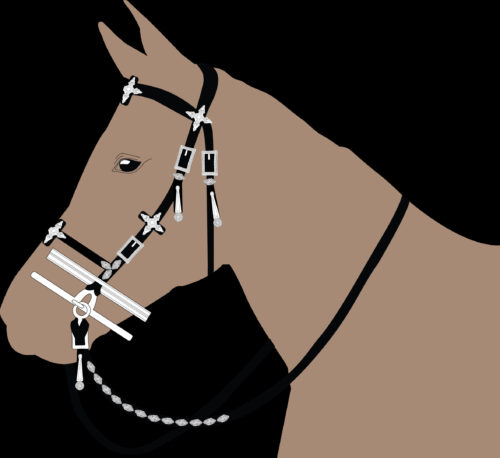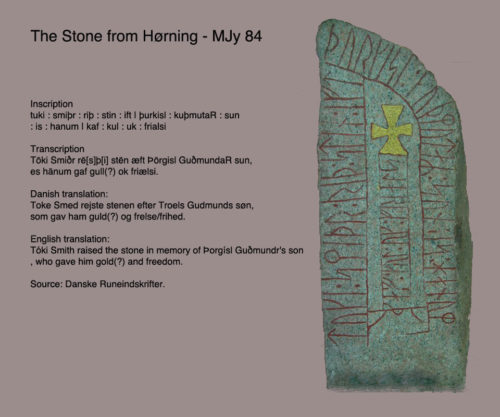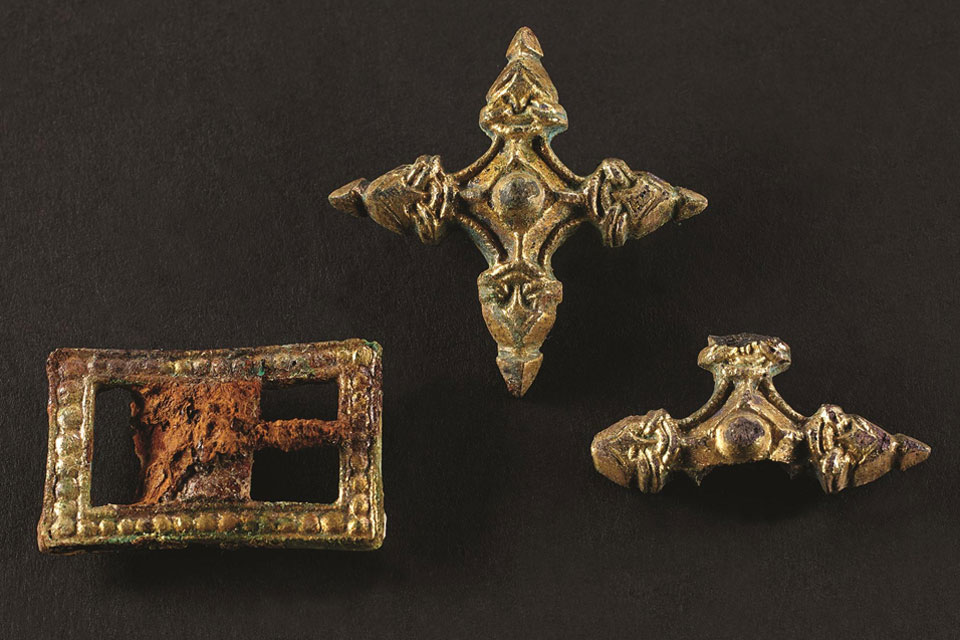Sensational find of chamber graves from the later part of the Viking Age at Fregerslev south of Hørning in Jutland in Denmark will hopefully witness to the ethos of the Viking warriors in the 10th century.
Fregerslev is a small settlement located a few km south of Hørning in the midst of Jutland near the town of Skanderborg. It lies down to a lake at an old crossing point. At the periphery of Hørning close to the road towards Fregerslev, a Viking burial ground was discovered in 2012, consisting of two inhumation graves and a tomb with two (or maybe three) chambers. While the two inhumation graves have been excavated, the chamber graves were left in situ for later excavation. However, intensive studies carried out using metal detectors as well as electromagnetic surveying left the archaeologists with tantalising glimpses of what might be a very rich picking ground for future excavations. Also, a magnificent headgear for a horse gave an inkling of what hopefully lies beneath. During the next years funding was sought while the find was kept hidden for fear of “night-owls”. Now, However, the time has come.
First excavation

Already in 2012, the two inhumation graves were excavated. One was empty of grave-goods, while the other contained a wood coffin made of oak and a skeleton, only partially preserved. This person was lying on his back with his arms at his sides. He was 165 – 170 cm high. Around this tomb, the archaeologists discovered a trapezoidal fence enclosing an area of 21 m2.
Set apart, the tomb itself was found to hold two, possibly three closely spaced chambers. One of these chambers represents the burial of a so-called “Viking Warrior”; inside the chamber, but outside the coffin, the remains of an astounding headgear of a horse’s harness were found and excavated. With the partially preserved organic remains of leather, it presents a chance of discovering how the different ornaments of gilded bronze and silver-plated iron were fitted to the headgear. Intensive studies and conservation are still going on, but as of now the headgear with a bridle, silver-plated quillons, and cheek-plates have been preserved. The headgear also appears to have been decorated with delicate and beautifully crafted “Viking Bling”. All pieces are decorated with fine ornamentations consisting of geometrical figures caught in chains, weaving, herringbone and annular patterns. The find also contains seven of presumably eight cross-shaped belt fasteners with animal heads at the raised centre.
The potential of this largely undisturbed grave belonging to an elite Viking warrior cannot be underestimated. Though found under flat ground, the tomb has been preserved because boulders may have defended the site against deep ploughing. measuring more than 21 m2 there is ample room for further riches (nad fantasies thereof).
It has been speculated what the chamber-grave may also hold: a couple, both man and woman? Horses and hounds? Valuable grave-goods like those from Bjerringbro? Most of the contemporary warrior-graves were excavated in the 19th century, and a general view of their socio-political status and the composition of their furnished graves are at hand. Nevertheless, the tomb at Fregerslev presents an opportunity to gather new and significant knowledge about these elite graves from the mid 10th century.
Stylistic parallels can be found at Langballigau near Flensburg (Northern Germany), Thumby Bienebek near Schleswig (in the old Danish borderland, now Northern Germany) and Grimstrup near Esbjerg (Denmark). Until now the tomb at Fregerslev was preserved according to the Malta Convention, Article 5.IV and the sensational find of the head-gear kept a secret. However, in April 2017 excavation will begin. During the next months, visitors are welcome on site, while the headgear is exhibited in Skanderborg.
 Another piece of the puzzle is the Rune Stone found in 1849 a field near Hørning. Dated c. 970 -1020, it measures 157 cm x 55-70 cm x 45 cm and features a nice and orderly inscription, which tells us about Tóki the Smith who raised the stone in commemoration of Troels, the son of Gudmundr, who gave him gold [?] and freedom. The meaning might be that our Toke achieved his freedom from slavery while at the same time being adopted into his family (“lyst I kuld”). Another reading, though, indicates that Toke received his freedom as well as “gold”, meaning that Toke was not only set free but also taken up as a full member of the hird or household of Troels’ (receiving gold).“ The middle of the inscription seems to form a tree of life, ending in a cross. The stone was found I app. 500 meters northeast of the church at a river crossing (“bro” meaning “bridge”). Here some significant water mills were traditionally active.
Another piece of the puzzle is the Rune Stone found in 1849 a field near Hørning. Dated c. 970 -1020, it measures 157 cm x 55-70 cm x 45 cm and features a nice and orderly inscription, which tells us about Tóki the Smith who raised the stone in commemoration of Troels, the son of Gudmundr, who gave him gold [?] and freedom. The meaning might be that our Toke achieved his freedom from slavery while at the same time being adopted into his family (“lyst I kuld”). Another reading, though, indicates that Toke received his freedom as well as “gold”, meaning that Toke was not only set free but also taken up as a full member of the hird or household of Troels’ (receiving gold).“ The middle of the inscription seems to form a tree of life, ending in a cross. The stone was found I app. 500 meters northeast of the church at a river crossing (“bro” meaning “bridge”). Here some significant water mills were traditionally active.
We may in all likelihood never know how it all fits together, but there is no doubt each of the different finds will – when considered together – shed light on a turbulent period in Danish history when earls and kings banded together and forged the beginning of anew Christian kingdom.
SOURCES:
Vikingen fra Fregerslev – dedicated website
Ryttergaven i Fregerslev.
By Merete Schiffer Bagge
In: Museum Skanderborg. Årbog 2015
Vikingetidstekstiler. Nye opdagelser fra gravfundene I Hvilehøj og Hørning.
By Anne Hedeager krag and Lise Ræder Knudsen.
In: Nationalmuseets Arbejdsmark (1999), pp. 159 – 170 (with English Summary)
FOLLOW UP:
READ MORE:
Dead Warriors in Living memory. A Study of Weapon and Equestrian Burials in Viking- Age Denmark, AD 800 -1000
By Anne Pedersen
Series. Studies in Archaeology and History, Vol 20:1 2 The Jelling Series
The National Museum 2014
REVIEW:
FEATURED PHOTO:
Gilded fittings from the headgear of a gorse form the grave of the Fregerslev Viking. © Skanderborg Museum
SEE MORE:
The Viking from Fregerslev

